Table of Contents
Force Equation force is any interaction that, when unopposed, will change the motion of an object. A force can cause an object with mass to change its velocity, to accelerate. Force can also be described intuitively as a push or a pull. A force has both magnitude and direction, making it a vector quantity.
It is measured in the SI unit of newtons and represented by the symbol F. The original form of Newton’s second law states that the net force acting upon an object is equal to the rate at which its momentum changes with time.
If the mass of the object is constant, this law implies that the acceleration of an object is directly proportional to the net force acting on the object, is in the direction of the net force, and is inversely proportional to the mass of the object.
Concepts related to force include thrust, which increases the velocity of an object; drag, which decreases the velocity of an object; and torque, which produces changes in the rotational speed of an object.
In an extended body, each part usually applies forces on the adjacent parts; the distribution of such forces through the body is internal mechanical stress. Such internal mechanical stresses cause no acceleration of that body as the forces balance one another.
Pressure, the distribution of many small forces applied over an area of a body, is a simple type of stress that if unbalanced can cause the body to accelerate. Stress usually causes deformation of solid materials, or flow in fluids.
Electrical Force: Definition, Types, Diagram, Examples & Coulomb’s Law
Force Equation
The Force Equation states that force is equal to mass multiplied by acceleration. So, if you know mass and acceleration, just multiply them together and now you know the force! The units for acceleration are meters per second squared ( m/s²), and the units for mass are kilograms (kg).

Let’s take a look at an example:
Mary is trying to lift a box from the floor to the shelf. She accelerates the 2 kg box with 2 m/s². What force does Mary exert on the box?
To solve this problem, just multiply the mass (2 kg) by the acceleration (2 m/s²) to get the final answer: 4 N of force was exerted on the box. Remember, in physics, always include all units, both in your problem when you show your math and when you write your final answer.
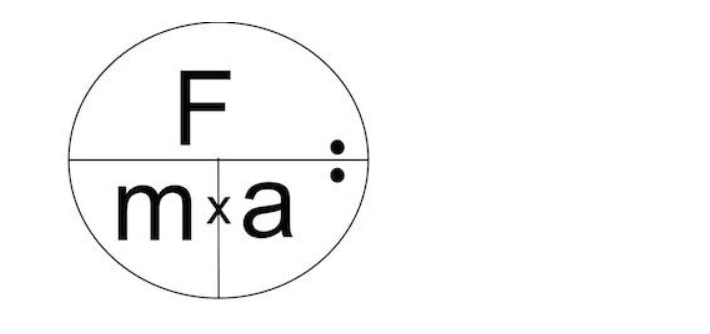
Using a circle, draw a horizontal line through the middle. Then, separate the bottom half of the circle into two sections. On the top, write F for force and on the bottom put m for mass in one section and a for acceleration in the other.
The horizontal line will be used for division and the vertical lines indicate multiplication. Next, cover up whatever variable you want to solve for with your finger. For example, let’s say we want to solve for acceleration. Cover the an on the circle. Now, you’re left with F divided by m.
Centripetal Force Equation
Any motion in a curved path represents accelerated motion and requires a force directed toward the center of curvature of the path. This force is called the centripetal force which means “center seeking” force. The force has the magnitude

Swinging a mass on a string requires string tension, and the mass will travel off in a tangential straight line if the string breaks. The centripetal acceleration can be derived for the case of circular motion since the curved path at any point can be extended to a circle.
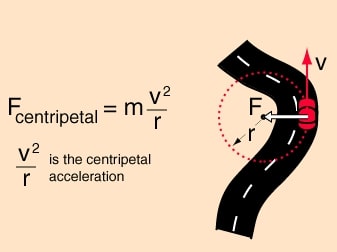
Note that the centripetal force is proportional to the square of the velocity, implying that a doubling of speed will require four times the centripetal force to keep the motion in a circle. If the centripetal force must be provided by friction alone on a curve, an increase in speed could lead to an unexpected skid if friction is insufficient.
Gravitational Force Equation
In the universe, there are many forces, a lot of pushes and pulls. Moreover, we are always pulling or pushing something, even if only in the ground. But, actually, in physics, there are four fundamental forces from which everything else is derived. Besides, these forces are the weak force, the strong force, the gravitational force, and the electromagnetic force.
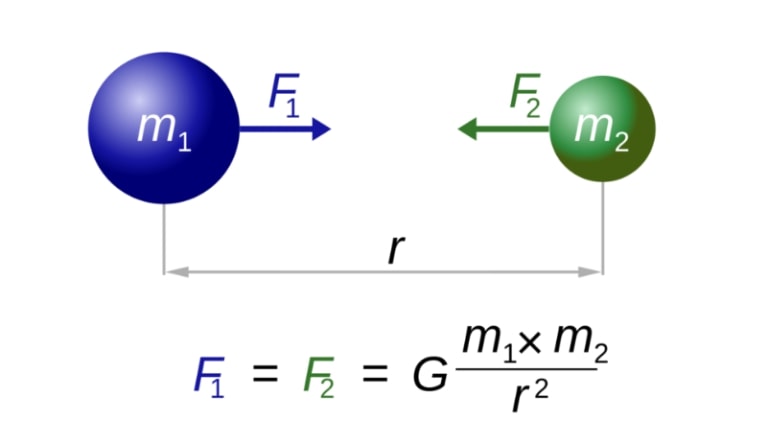
Furthermore, the gravitational force is something that attracts any two objects with mass. In addition, this gravitational force attracts because it always tries to pull masses together and it never pushes them apart. Moreover, every object including you pulls every other object in the entire universe and this is called Newton’s Universal Law of Gravitation.
Electrical Force: Definition, Types, Diagram, Examples & Coulomb’s Law
Spring Force Equation
Robert Hooke investigated how springs and elastic materials stretch. Hooke’s Law states that the force needed to compress or extend a spring is directly proportional to the distance you stretch it. Or, in other words, the more you stretch something, the harder it becomes to keep stretching it. It’s a linear relationship. Or you could think of it this way: As you stretch something out, there is a restoring force that you have to compete with. That restoring force is trying to spring the object back to how it started.
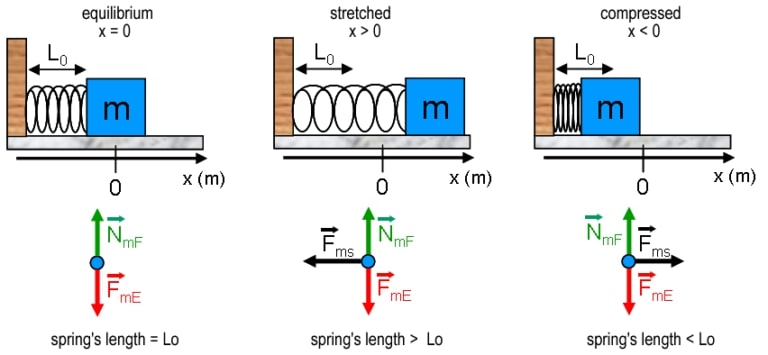
As an equation, Hooke’s Law says that the force applied in newtons (or the restoring force it amounts to the same thing) is equal to the negative of the spring constant, k, of the material, multiplied by the extension, x, of the material, measured in meters.
We use the negative sign when we’re talking about the restoring force because the restoring force is in the opposite direction to the extension. But if F is the force we apply, then the negative sign goes away, and it’s just F=-kx
Electric Force Equation
The quantitative expression for the effect of these three variables on electric force is known as Coulomb’s law. Coulomb’s law states that the electrical force between two charged objects is directly proportional to the product of the quantity of charge on the objects and inversely proportional to the square of the separation distance between the two objects. In equation form, Coulomb’s law can be stated as
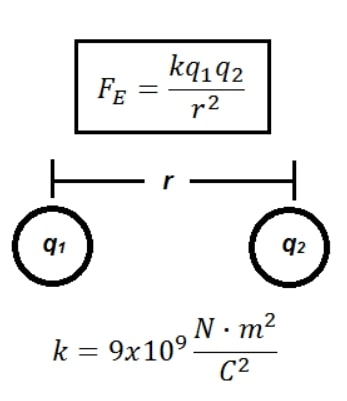
where Q1 represents the quantity of charge on object 1 (in Coulombs), Q2 represents the quantity of charge on object 2 (in Coulombs), and d represents the distance of separation between the two objects (in meters). The symbol k is a proportionality constant known as the Coulomb’s law constant.
The value of this constant is dependent upon the medium that the charged objects are immersed in. In the case of air, the value is approximately 9.0 x 109 N • m2 / C2. If the charged objects are present in water, the value of k can be reduced by as much as a factor of 80.
It is worthwhile to point out that the units on k are such that when substituted into the equation the units on charge (Coulombs) and the units on distance (meters) will be canceled, leaving a Newton as the unit of force.
Coulomb’s law equation provides an accurate description of the force between two objects whenever the objects act as point charges. A charged conducting sphere interacts with other charged objects as though all of its charges were located at its center.
While the charge is uniformly spread across the surface of the sphere, the center of charge can be considered to be the center of the sphere. The sphere acts as a point charge with its excess charge located at its center.
Since Coulomb’s law applies to point charges, the distance d in the equation is the distance between the centers of charge for both objects (not the distance between their nearest surfaces).
The symbols Q1 and Q2 in the Coulomb’s law equation represent the quantities of charge on the two interacting objects. Since an object can be charged positively or negatively, these quantities are often expressed as “+” or “-” values.
The sign on the charge is simply representative of whether the object has an excess of electrons (a negatively charged object) or a shortage of electrons (a positively charged object). It might be tempting to utilize the “+” and “-” signs in the calculations of force. While the practice is not recommended, there is certainly no harm in doing so.
When using the “+” and “-” signs in the calculation of force, the result will be that a “-” value for force is a sign of an attractive force and a “+” value for force signifies a repulsive force. Mathematically, the force value would be found to be positive when Q1 and Q2 are of like charge – either both “+” or both “-“.
And the force value would be found to be negative when Q1 and Q2 are of opposite charge – one is “+” and the other is “-“. This is consistent with the concept that oppositely charged objects have an attractive interaction and like-charged objects have a repulsive interaction. In the end, if you’re thinking conceptually (and not merely mathematically), you would be very able to determine the nature of the force – attractive or repulsive – without the use of “+” and “-” signs in the equation.
Buoyant Force Equation
Buoyancy is the force acting opposite the direction of gravity that affects all objects submerged in a fluid. When an object is placed in a fluid, the object’s weight pushes down on the fluid (liquid or gas) while an upward buoyancy force pushes upward on the object, acting against gravity. In general terms, this buoyancy force can be calculated with the equation
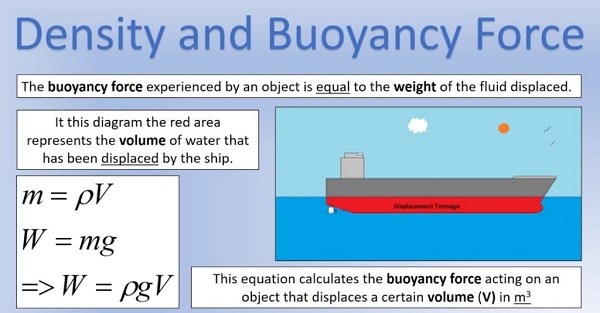
Fb = Vs × D × g, where Fb is the buoyancy force that is acting on the object, Vs is the submerged volume of the object, D is the density of the fluid the object is submerged in, and g is the force of gravity.
FAQs
What Is The Formula Of Force?
The Formula For Force Says Force Is Equal To Mass (M) Multiplied By Acceleration (A). If You Have Any Two Of The Three Variables, You Can Solve For The Third. Force Is Measured In Newtons (N), Mass In Kilograms (Kg), And Acceleration In Meters Per Second Squared ( M/S2 ).
How Do You Calculate Force Example?
Plug The Numbers You Want To Convert To Mass Into The New Equation, M = F/A. As An Example, We Will Use An Object With A Force Of 10 N And An Acceleration Of 2 Meters Per Second Squared. Divide The Newtons By The Rate Of Acceleration, Which Will Give You The Mass Of The Object.
How Do You Calculate Load Force?
Multiply The Mass Of The Object By The Gravitational Acceleration Of The Earth (9.8 M/Sec2), And The Height In Meters. This Equation Is The Object At Rest’s Potential Energy. Potential Energy Is Measured In Joules; This Is The Load Force.
What Is The Formula For Centrifugal Force?
It Can Be Equal To 5 M/S. If You Know The Angular Velocity Only, You Can Use The Formula V = ω * 2 * π * R To Calculate The Velocity. Use The Centrifugal Force Equation: F = M * V^2 / R .
What Is the SI Unit Of Force?
Definition. One Newton Is The Force Needed To Accelerate One Kilogram Of Mass At The Rate Of One Metre Per Second Squared In The Direction Of The Applied Force. The Newton Thus Became The Standard Unit Of Force In The Système International D’unités (Si), Or International System Of Units.
Electrical Force: Definition, Types, Diagram, Examples & Coulomb’s Law
